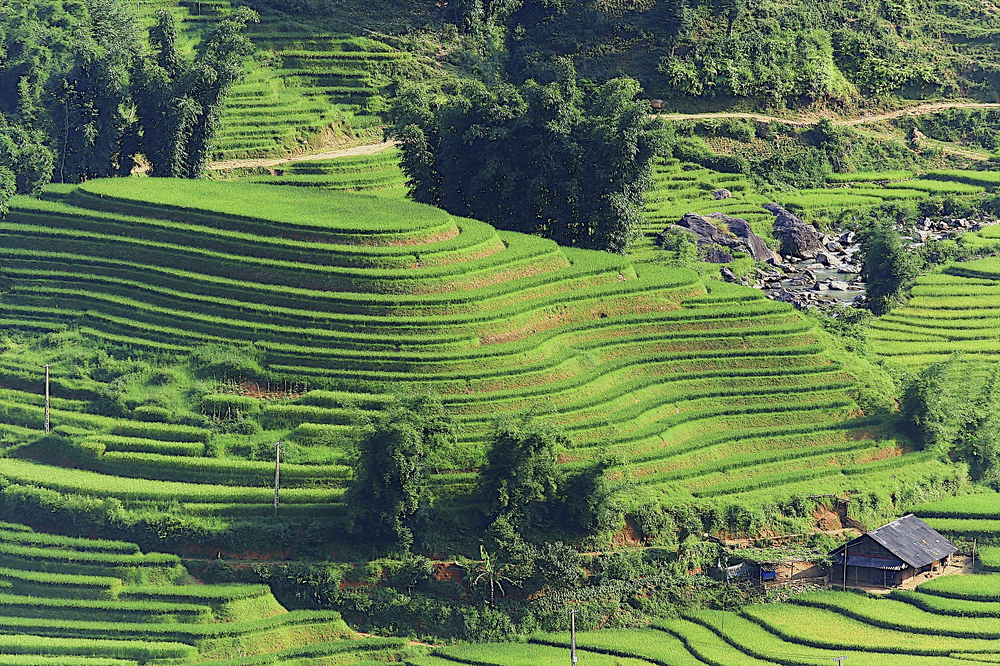The Philippine mountains of Ifugao are famous for being home to rice terraces that were carved into the mountainside over 2000 years ago, by ancestors of the indigenous people. While there are many rice terraces to be found around the Philippines, the Banaue Rice Terraces are distinctly unique, showcasing an ancient yet living landscape that has now been designated a National Cultural Treasure, as well as a UNESCO World Heritage Site.
The Rice Terraces
The rice terraces of Banaue were most likely carved into the mountain by hand, and were done so to solve a serious problem that locals were facing at the time. With nothing but vertical slopes of mountain to grow their food on, the rice terraces provided a practical solution to this, and not only are they incredibly functional, but they also have a beautiful surreal quality to them. When it comes to irrigation, this was also thought about in great detail, and the rice terraces boast a complex irrigation system that harvest water from the mountain mist – an engineering technique that has allowed the terraces to thrive for over 2000 years.
Abandoned and Revived
For many farmers that were based around the Ifugao mountains, the rice terraces were their sole source of income and survival. Sadly, with a daily wage of less than US$6, more and more locals began migrating to the cities, soon leaving the rice terraces completely abandoned. This then led to their deterioration, but, fortunately, in recent years, there has been quite the revival in the region. With the price of rice once again rising, the younger generation has been returning to the rice terraces to cultivate this staple crop once again, meaning that around 90% of these ancient terraces are now back in action.

Visiting the Rice Terraces
With many Filipinos referring to the rice terraces as the eighth wonder of the world, it comes as no surprise that they make for quite the popular tourist attraction. When it comes to deciding when to visit, keep in mind that June and December are usually harvest times, meaning that the terraces will be covered with a golden sheen, and there will be a constant buzz of activity around. For those who would prefer to visit at a quieter time, April to May, or October to November, is when the terraces will be a splendid shade of green, but be sure to stay away between July and August, as this is the rainy season and your view of the slopes will not be as impressive. Banaue itself is easy to access from many parts of the Philippines, with a direct train and bus from Manila, or jeepney rides from other nearby provinces.
With the average Filipino consuming around 120kg of rice each year, rice is most definitely one of the most important food staples in the country, making it no surprise that ingenious ways of growing this crop had to be sought out in the mountainous regions. Whether you choose to take a guided walk along the rice paddies, stopping off at the natural swimming holes along the way, or enjoy the splendid view from a distance, the Banaue Rice Terraces are definitely a must-visit for those who want to experience a sense of living history.

Leave A Comment